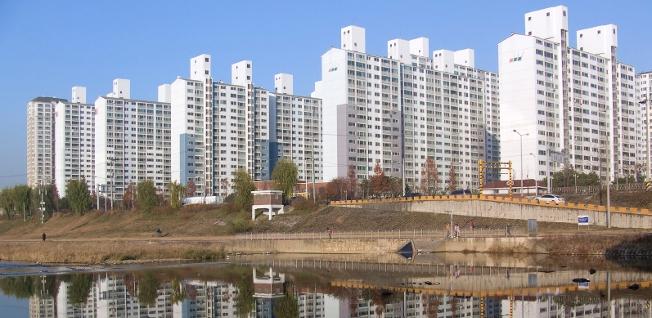
House Hunting In South Korea
One of the firsts things you have to do when you arrive somewhere is to find a place to live. Upon our arrival, my parent’s in-law welcomed us in their home. But, even though they are really kind and welcoming, my wife and I needed a place that will be ours.
I had heard a lot of things about the korean system to rent an apartment, but it wasn’t really so clear to me. Something about a big deposit you give to the owner, and he gives it back to you when you leave.
Anyway, we started our house hunting by going to the first real estate agency we found. This is when I understood I was really far from home ! Because there is a few more things you need to know to understand, and to find an apartment.
1. Make the difference between 빌라 “Villa” and 아파트 “Appart” (pronounce with “A” like in french).
No misunderstanding, the “Villa” is not a house, with a garden, as you can imagine. To my point of view a Villa should be like that:
Here, it’s quite different. “Villa” is an apartment in a small – about three to five floors – building.
아파트 (“Appart”) is an apartment in much more higher building, usually between 10 and 25 floors, often gathered by 5 or 6, with underground parking, care-takers and playground for children
At the beginning I thought it looks like housing projects, but I got used to it !
If you made your choice about that, you can go ahead with the second step:
2. 전세(Jonsé) and 월세 (Wolsé)
“Wolsé”(Wol means month) is almost like classical rental. You pay an every month rent, but you have to give a deposit. Quite important – between 20,000,000 and 50,000,000 krw.
For “Jonsé”, the deposit could be from 120,000,000 to …. maybe 500,000,000 (I don’t really know !) depending on the area, and the size of the apartment, and you don’t have pay rent.
For both, the contract is usually for 2 years, and at the end, you get your deposit back. So if you have or can borrow the money, “Jonsé” will cost you almost nothing.
My wife and I found in apartment with “Wolsé”, that we can afford by ourself, but my parent’s in law insisted that we go for a “Jonsé”, as they would lend us the money.
I don’t know how is it in your country, but in France it is really complicated to rent an apartment. You’ll be asked for tens of paper about your salary for the last three months, tax declaration, someone to vouch for you….. Here, if you have the money for the deposit, no more questions !!
3. The surface:
As everything is not complicated enough, in Korea, the system of measurement for the apartment is different. They do it in 평(Piong). One “piong” equal to 3,31 m2… so now, you do the math ! But I think it include more than only the surface of the apartment, as our apartment is 39 piong, and about 80m2 in the contract. It might include a part of the common areas of the building. I still couldn’t figure it out.
4. To leave the apartment:
You usually sign a two-years contrat, but if you want to leave before the end of the contract, you have to find the next tenant to get your deposit back !
We finally signed for a “Jonsé”, with 140,000,000 krw deposit, 39 “piong”, in a 10 floor building, ten minutes from the metro station. (we live just outside Seoul)
I hope this will help you to find you apartment in Korea !!





